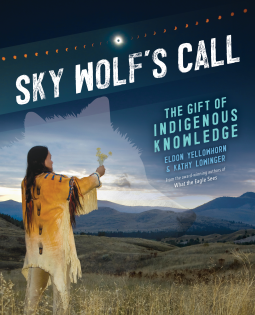It's July on Alaska's North Slope, and scientist Denver Holt is in Utqiagvik surveying nests. Denver has been coming here since 1992, and the snowy owls he studies have been coming here much longer: thousands of years. With its mix of coastal, low-elevation tundra and a rich presence of lemmings, the North Slope is the only area in Alaska where snowy owls regularly nest. How do snowy owls decide where they will nest? How do they manage to arrive at locations where food will be abundant? What drives the success of these delicate tundra ecosystems? These are the mysteries Denver is trying to solve to help ensure a bright future for these elegant hunters.
Early Book Review: The Snowy Owl Scientist by Mark Wilson
It's July on Alaska's North Slope, and scientist Denver Holt is in Utqiagvik surveying nests. Denver has been coming here since 1992, and the snowy owls he studies have been coming here much longer: thousands of years. With its mix of coastal, low-elevation tundra and a rich presence of lemmings, the North Slope is the only area in Alaska where snowy owls regularly nest. How do snowy owls decide where they will nest? How do they manage to arrive at locations where food will be abundant? What drives the success of these delicate tundra ecosystems? These are the mysteries Denver is trying to solve to help ensure a bright future for these elegant hunters.
Early Book Review: Dig, Dance, Dive: How Birds Move to Survive by Etta Kaner, June Steube
Dig, Dance, Dive: How Birds Move to Survive is a beautifully illustrated book. The watercolor artwork is very well done and the book is worth a look even before getting into the text of the book. I never thought too much about how birds moved, aside that most flew and some swam. This book gives a nice look at some of the more unusual movements of birds and how they impact the survival and lives of the birds. This is a great book for the elementary and younger set- to read alone or share with an adult or older child.
Early Book Review: Weed-Free Gardening: A Comprehensive and Organic Approach to Weed Management by Tasha Greer
Weed-Free Gardening is a well written and organized book. I found that it could stand up well to reading cover to cover or by reading the sections you need most or want to study up on. I like that the suggestions and explanations are realistic and understandable. I liked that the author acknowledged that no solution is perfect, because nature is amazing and every yard, region, and gardener is a little different. However, I loved that the history, science, and personal stories are woven in together to give readers the best foundation of information to figure out what they want to try, what is most likely to suit their needs, and how to adjust as they try things. I thought the information was clearly worded, easy to follow and understand, and paired with images that brought it all together. I was just planning this year's garden, and this book has given me some great ideas and helped to shift some of my gardening notions that just might have been part of my weed issues. I look forward to trying out some of the new tips and tricks that are now part of my knowledge base. I wish I had more room on my gardening bookshelf so I could add it to my collection. I just might splurge on a copy even though I am out of room.
Early Book Review: Into the Forest: The Secret Language of Trees by Susan Tyler Hitchcock
Early Book Review: Octopus, Seahorse, Jellyfish by David Liittschwager
Early Book Review: Sky Wolf's Call: The Gift of Indigenous Knowledge by Eldon Yellowhorn, Kathy Lowinger
Early Book Review: The World of Coral Reefs: Explore and Protect the Natural Wonders of the Sea by Erin Spencer
Book Review: Hidden Animal Colors by Jane Park
Early Book Review: The Atlas of Migrating Plants and Animals by Matt Sewell, Megan Lee
Early Book Review: Sexus Animalis: There Is Nothing Unnatural in Nature by Emmanuelle Pouydebat
Book Review: Attracting Beneficial Bugs to Your Garden, Second Edition: A Natural Approach to Pest Control by Jessica Walliser
Book Review: Who Lives near a Glacier? Alaska Animals in the Wild by Susi Gregg Fowler, Jim Fowler
Early Book Review: Blowholes, Book Gills, and Butt-Breathers: The Strange Ways Animals Get Oxygen by Doug Wechsler
Blowholes, Book Gills, and Butt-Breathers: The Strange Ways Animals Get Oxygen by Doug Wechsler is currently scheduled for release on December 7 2021. This is the latest installment of the How Nature Works series.
Book Review: Ocean Planet: Animals of the Sea and Shore by Ben Rothery
Book Review: America the Beautiful Cross Stitch: 30 Patterns of America’s Most Iconic National Parks and Monuments from becker&mayer! books
Early Book Review: Bat's Moonlight Feast by Gordon McMillan, Carly Allen-Fletcher
Bat's Moonlight Feast is a nonfiction picturebook written by Gordon McMillan and illustrated by Carly Allen-Fletcher. It is currently scheduled for release on November 1 2021. The tube-lipped nectar bat is the pollinator of a pale, bell-shaped flower found in the Ecuadorian cloud forests. First discovered in 2005, the bat is the only known pollinator of a pale, bell shaped flower called Centropogon nigricans . Due to the length of the bloom, no other animal can reach the nectar which rests at the flower’s base. This is the story of one such bat and her nocturnal search for this rare flower whose nectar sustains her.
Bat's Moonlight Feast is an absolutely beautiful book. I thought the artwork was extremely well done and did a great job of showing the details of the subject matter. The backgrounds were just as beautiful as the work done on the bats and flowers. I looked through the images several times simply to enjoy them. I also thought the text was well done, and easy to understand without being dumbed down. I liked the additional text that gave more information on the newly discovered bat and what we have learned about it. I think young readers will love this book, and animal and nature enthusiasts of all ages will as well.
Early Book Review: Underwater Wild: My Octopus Teacher's Extraordinary World by Craig Foster; Ross Frylinck
I have to admit that I picked Underwater Wild to read because of the photography. Seriously, the images are stunning and well worth a look at the book all on their own. They are simply stunning. The text is well written and talks about much more than the marine life feature. The narrative style brings readers along for the ride, showing rather than telling about what has been seen and learned. It is about marine life, exploration, family, relationships, and more. When paired with the photographs, the text gives an extra layer of wonder and heart to the book as a whole. I think this book will appeal to a wide range of readers, and some will definitely be taking more time to enjoy the pictures than the text, no mater how moving or interesting the information shared.
Early Book Review: Monkeys: Apes, Gorillas and other Primates by Tom Jackson
Early Book Review: The Strangest Thing in the Sea: And Other Curious Creatures of the Deep by Rachel Poliquin, Byron Eggenschwiler
The Strangest Thing in the Sea: And Other Curious Creatures of the Deep, written by Rachel Poliquin and illustrated by Byron Eggenschwiler, is a children's nonfiction book currently scheduled for release on October 5 2021. A look at some very strange creatures in the sea --- but which is the strangest? A feathery tutu dancing through the water? A tiptoeing rock wearing a wig? A mountain of skulls on the ocean floor? Not everything is quite as it seems in this fascinating exploration of 12 bizarre and little-known sea animals. Each creature is introduced with an imaginative first-person depiction of its appearance, accompanied by an artistic interpretation and the question, “Am I the strangest thing in the sea?” Then, open the gatefold, and an illustration and full description of the actual creature in its habitat are revealed, along with the tantalizing answer that, no, this is not the strangest thing in the sea. That is, until the last creature, which is the strangest. But what could it be?
I enjoyed The Strangest Thing in the Sea very much. I thought the artwork matched the text very well, and the detail and imagination on each page showed great skill. I thought the use of gatefolds was a good choice, and the execution was on point. The page layout, and book organization as a whole, was very good. I enjoyed the balance of whimsy in the imagined version oft he creatures balanced with solid information. I have to admit that I was already very familiar with most of the animals featured, but I think the approach and chosen information was great.I really liked that a glossary and chart showing the different zones of the sea and where the featured animals live were included. I learned a few new things, and I think readers of a variety of ages will be highly engaged and interested in this book.
Audiobook Review: Bees and Their Keepers by Lotte Möller, Narrated by Julie Maisey
Bees and Their Keepers is a non fiction book written by Lotte Möller, and the audiobook is narrated by Julie Maisey. The study of bees has often been considered a divine occupation, as the creature’s attention to detail and purpose is so special and the honey they produce, almost magical. In this compelling cultural history that moves beautifully through the beekeeper’s year, Swedish beekeeper and writer Lotte Möller shares her understanding of bees and bee lore from antiquity to the present with deep knowledge and sharp wit. Möller gives insight into the activity in the hive and describes the bees’ natural order and habits. She explores the myths of the past and how and when they were replaced by fact. In stories from her travels, Möller encounters a host of colorful characters, from a trigger-happy California beekeeper raging against both killer bees and bee politics to the legendary Brother Adam of Buckfast Abbey, breeder of the Buckfast queen, now popular throughout Europe and beyond, as well a host of others as passionate as she about the complex world of apiculture both past and present.
Bees and Their Keepers is an interesting book. I learned a great deal, and thought the stories and information shared where engaging. I have several books about bees, in particular their current plight with pesticides and other dangers they are facing. Getting a look at how people have interacted with bees through out history, both distant and more recently, has given me a more well-rounded appreciation for honey and the work that goes into beekeeping. I liked that moments from the author's adventures in researching the topic, personal explorations, and own beekeeping were included. All of the individual components were informative and interesting to listen to on my commutes back and forth to work. However, I have to admit that sometimes the topic changes or asides to give more information on a very specific topic or adventure caught me off guard and it took me a bit to switch gears. It just felt a little disjointed at times. Similarly, the end rather snuck up on me. That is not likely to happen to those reading a print copy, but in the audiobook version I was listening and expecting more on a topic, or another topic change, and then suddenly I was listening to the copyright information. It just felt a bit abrupt to me.
Bees and Their Keepers is and interesting look at the history and world of beekeeping.





















